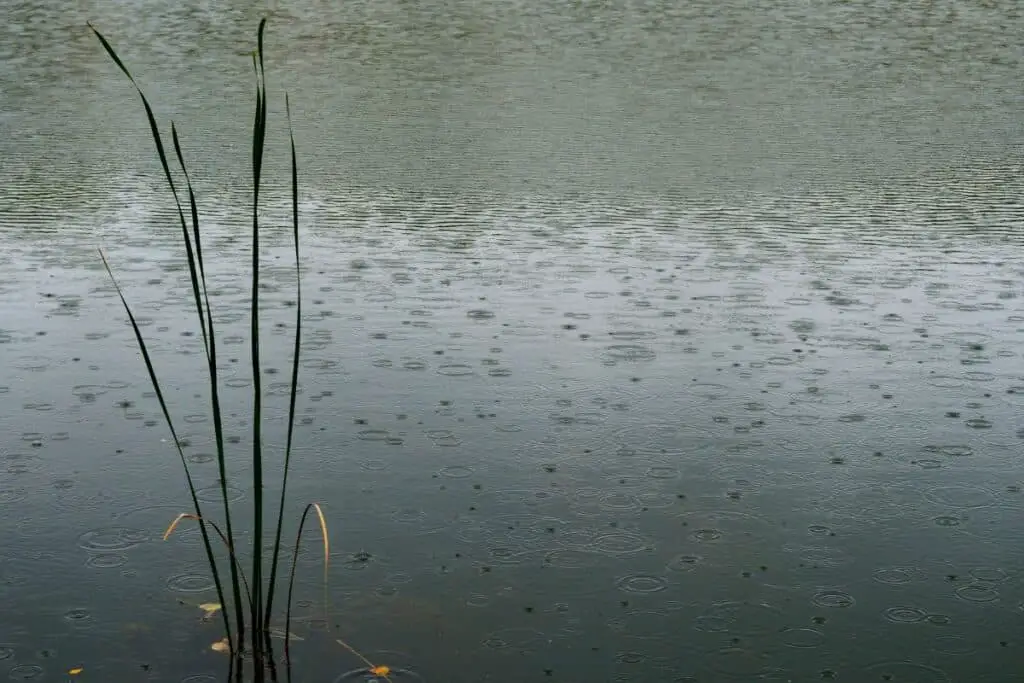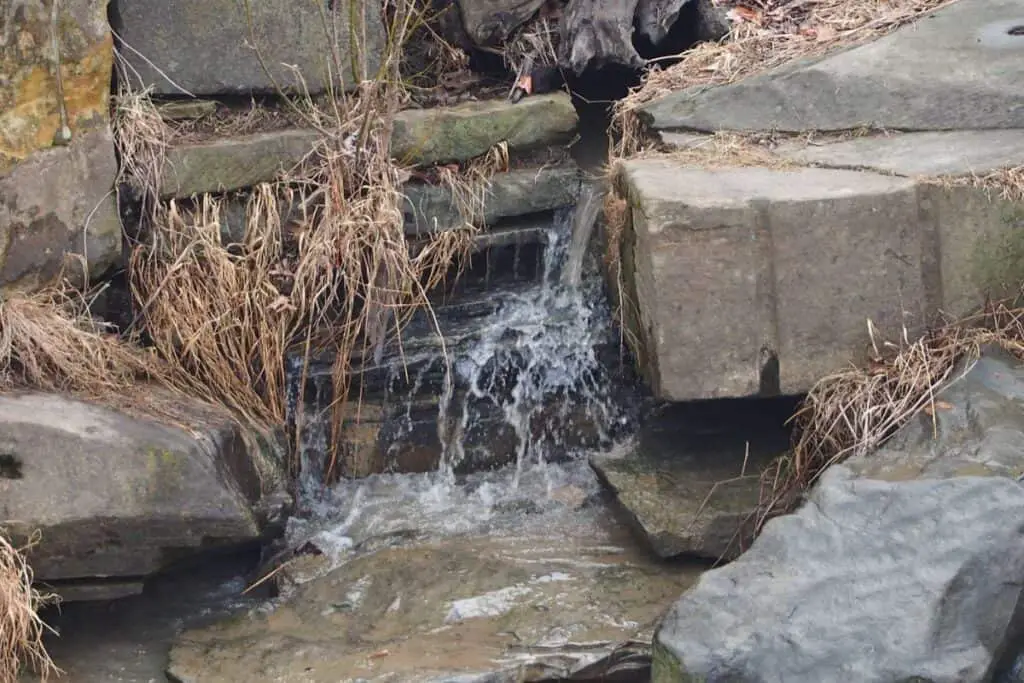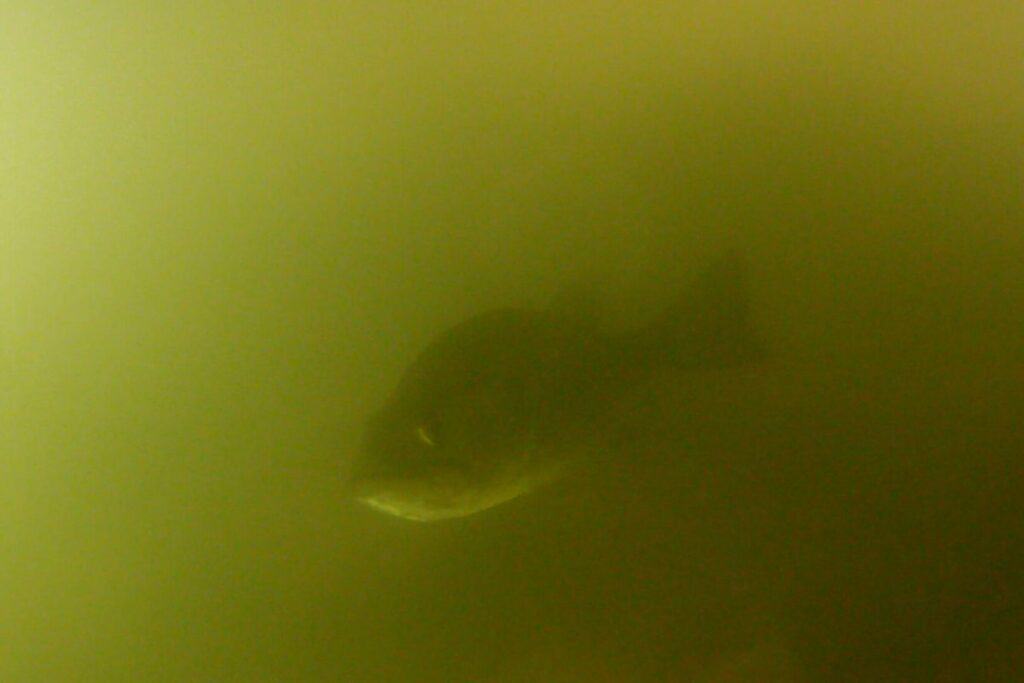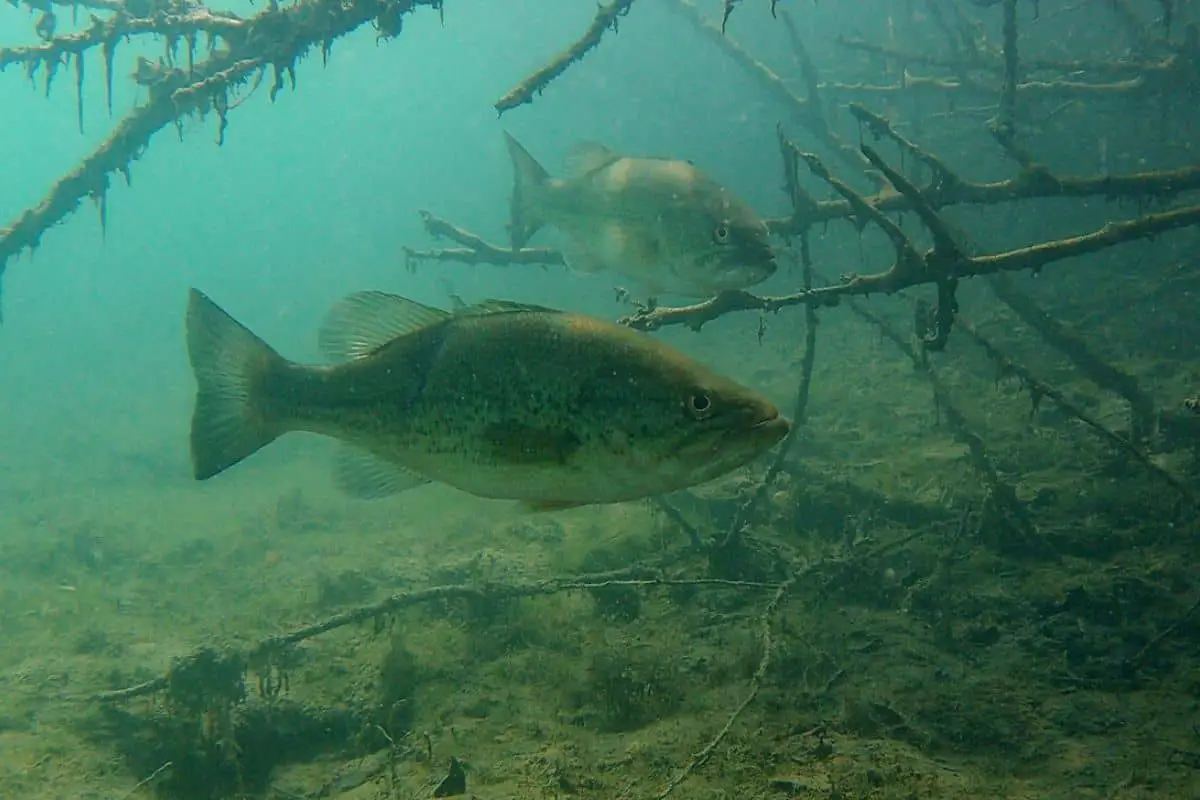The one constant in bass fishing is that the weather is always changing the conditions we face as anglers. Rain systems have definite impacts on bass before, during, and after the precipitation.
Right before rain starts and during the showers, anglers experience a period of low pressure that can trigger bass to be more active. Rain and runoff add oxygen to the water and can position bass in predictable locations.
There are multiple other factors to consider and we will cover them in this article. Before we dive in, it is probably best to quote bass-fishing legend, Hank Parker. He likes to say, ‘When in doubt, don’t go out.”
Fishing around rain is a completely different situation than fishing during a storm. If it’s not safe, stay under shelter.
Right Before the Rain Hits and How Bass Behave
A frontal system that brings rain is categorized as a low-pressure system and this has a definite impact on fish.
We know that during low-light and low-pressure systems the bass are more apt to roam or actively cruise. But why?
I believe it has to do with a couple of factors. First, bass are not keen on bright sunlight. Heavy cloud cover blocks the intense rays from entering the water and lets the bass become more active predators.
Second, the food chain is activated starting at the microscopic level. Zooplankton are at the mercy of many factors including high and low-pressure systems. During a low-pressure system, these tiny organisms are going to be higher in the water column.
The small fish and other creatures that prey on zooplankton take advantage of this.
The bigger predators, like bass, are not far behind.
If you would like to witness what an impact high and low pressure has on the water column, take a look at the floating sticks in the lake. When the pressure system is low the sticks will be riding horizontally like we would imagine they should. As the pressure system increases after a storm, many of those same sticks are going to be floating vertically in the water column. Keep an eye on it next time you are out fishing and that will be a visual reminder of what part of the water column to focus on.

How Bass Act During a Steady Rain
Remember, there is a difference between rain and a thunderstorm.
When it is only raining, anglers are at a huge advantage over other conditions. The rain disrupts the water’s surface which allows us to get closer to the fish. This is especially noticeable in clear water.
Shore anglers can sneak right up to laydowns and other shallow cover. When it is raining, you can be confident the bass are still there and not scared off by shadows or movement.
While the rain is coming down, the bass can be quite active and chase down prey.
Lures and presentations that cover water are what you want to be throwing. Spinnerbaits, crankbaits, swim jigs, swim baits, topwaters, and jerkbaits are all excellent choices. These baits move horizontally through the water column and not only find where bass are, but catch the aggressive fish.

Oxygen from Rain and How it Positions Bass
Depending on the body of water, oxygen can become an issue during the warm months. Lack of current, wind, and fresh water intake stresses all fish. Bass are no different.
Rain adds much-needed oxygen to the water. Runoff is also a critical component in creating well-oxygenated ecosystem.

The bass will naturally pull shallower in these conditions. If the dissolved oxygen in the water was low, this movement to shallow water can be quite rapid. The smaller prey species like minnows and panfish are also drawn to areas where runoff is spilling in. The sudden flow stirs up the food chain as well as creates optimum oxygen levels.
Don’t underestimate how shallow the bass will position themselves with nice, clean runoff spilling into a lake or river.
If the water pouring in is mud, well, that is a different matter entirely.

Water Clarity and How it Positions Bass
It is important to remember that bass like stability. No matter what the weather system, it is usually the third day when the bite improves.
Water clarity is an important factor to consider.
Clear water bass are going to behave differently when things suddenly get muddy compared to bass that live in dirty water all the time. And there is a huge difference between a slight stain from runoff and rain and a mudline from flood water pouring into a lake or river system.
In general, low-visibility situations push bass shallow and towards hard structure. If the bass have an option, they will seek out the clearest water possible. So, if the water you are fishing in is all dirty from the rain, check that ultra-shallow, hard, structure. Things like rip rap, sea walls, and dock systems are all places bass shocked from the lack of visibility will go.
If you are in a large river system or a big reservoir, an interesting situation can form. I have two examples I have experienced in the past that will clarify how powerful water clarity can be both during and after heavy rains.
First, let’s talk about a muddy water surge I ran across on Smith Mountain Lake in Virginia.
Before our tournament, there was a severe rainstorm on the upper end of the lake. As the runoff poured into the upper creek arms, a mass of flood debris and chocolate-colored water formed. When the rains quit, this mass stayed together and slowly flowed towards the dam on the lower end.
The storm surge was about 300 yards in length and from shoreline-to-shoreline at the upper end of the lake. I idled through it, carefully, and on the other side, the water was crystal clear.
Smith Mountain Lake, at this time, normally had good visibility everywhere and was gin-clear on the lower end. When I fought my way through the storm surge and started to fish the clear water above it the bite was excellent and I had a good finish. The storm waters drove the bass to find the clearer water they were accustomed to and preferred.
The second situation was on the Upper Mississippi River south of LaCrosse, WI. Minnesota had been pounded with severe weather a few days prior to my arrival. We were fishing the Minnesota Slough when the storm surge belched its way into the Mississippi. The water instantly went from clean to zero visibility.
After scouring Google Earth on our phones, we found a bay that had no direct current flowing into it. This created a defined mud line as the storm surge flowed by the mouth of this bay.
The fish in the area congregated in this big pocket of clean water and I mean they were stacked in there. It is important to remember that the upper portions of the Mississippi River normally have decent visibility. It is a much different river than in the southern part of the country.
The storm surge, once again, positioned the bass by forcing them to look for cleaner water.
Mud Lines in Other Situations and How Bass Relate
These previous two examples are extreme. Most often a mudline is less defined but is still easy to spot and it will position fish.
I have fished in waters where a mud line that only slightly stains the water will have fish cruising right on it. I can only assume that the bass were using this lower visibility, but not muddy, water to help conceal their movements and make it easier to attack prey.
This current flow from runoff, even though it may be stained, will have the much-needed oxygen that we talked about earlier. All sorts of creatures are drawn to the area and will position themselves right along a mudline.
Rising Water and How it Positions Bass
This is my least favorite situation in bass fishing. It potentially adds thousands more acres of surface water and spreads the bass out.
They will invade these newly flooded waters and take full advantage of the terrestrial creatures that are now stranded or follow the baitfish that are feasting.
While it may be fun to flip-and-pitch jigs around flooded picnic tables and timber, it is not an efficient way to bass fish.
I have learned, the hard way, that vertical structure for me is the best place to fish when the water is on the rise. It forces the bass that are there to stay tight to it and only go up with the rising water, not spread out over acres of endless flats.
Bluff banks are my favorite to fish on rising water, but riprap shorelines, sea walls, and docks are good as well. Any location where the bass are only moving vertically and not horizontally is a rising water hot spot.
Final Thoughts
Bass fishing right before, during, and immediately after the rain can result in some terrific catches.
Always be thinking about oxygen and water clarity and you will be on the path to success. Keep some moving baits tied on and find where the fish are positioned.
Good luck out there and make sure to encourage someone today. You never know how you may change their life forever.
Isaiah 6:8

